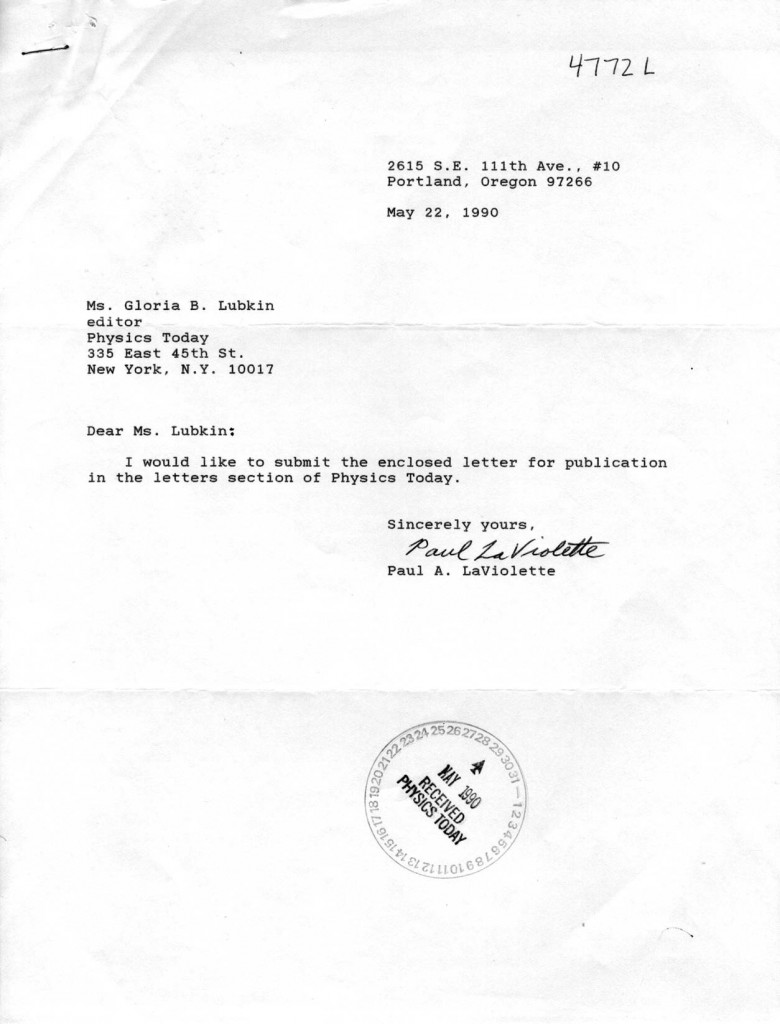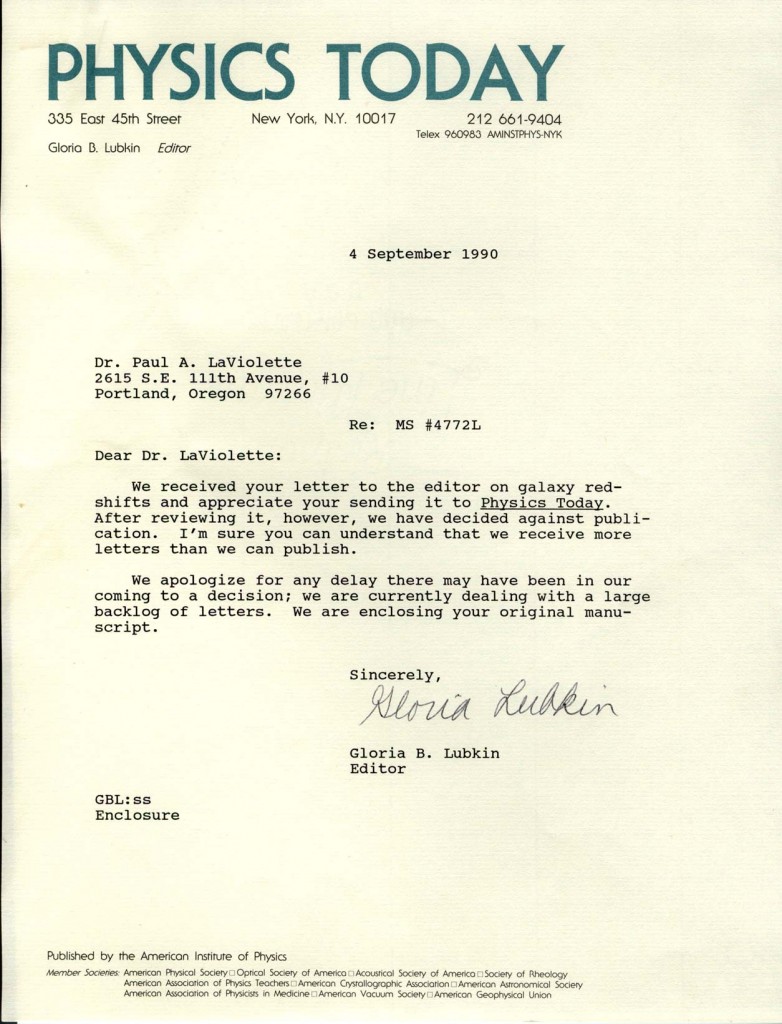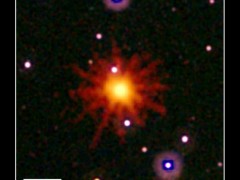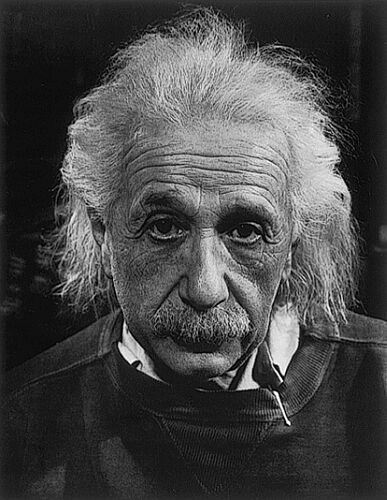Author Archives: Paul
Letter to Physics Today magazine regarding subquantum kinetics galaxy redshift prediction
Letter to the editor sent to Physics Today magazine on May 22, 1990
Will the Hubble Telescope Detect a Limit to Galaxy Redshifts?
May 22, 1990
Paul A. LaViolette, Ph.D.
The Starburst Foundation
2615 S.E. 111th Ave., #10
Portland, Oregon 97266
With the launching of the Hubble Space Telescope astronomers are anxiously waiting to see what will be revealed to lie at the "edge" of the universe. The big bang theory predicts that few galaxies should be observed with redshifts much greater than 4, simply because there is not enough time for them to form. This assumes an age for the big bang universe of 9.4 billion years, based on the findings of Reid et al.(1) and Tully(2) which suggest Ho = 100 km/sec/Mpc. Galaxy formation models require at least 750 million years to form light-emitting galaxies, and according to the big bang cosmology, galaxies with z > 4 would necessarily be younger than this. If there is indeed a cut-off at around this value, the Hubble Telescope would be able to see it. The telescope should be able to detect light emitting objects with redshifts even as high as 30, if such exist. So observations with the Space Telescope could provide a crucial test of the validity of the big bang theory.
However, I predict that contrary to expectations, galaxies will be found which will have redshifts greater than 4 and, in fact, that they will be found in great numbers. This prediction arises from a quantum theory that projects a cosmology quite different from that of the big bang theory. This subquantum kinetics(3) cosmology predicts a static universe of unlimited size in which matter arises through a process of continuous creation, creation rates being highest in the vicinity of existing matter. The cosmology also predicts the existence of a tired-light cosmological redshift for photons travelling through intergalactic space. As was demonstrated in 1986,(4) this tired-light prediction fits observational data better than the expanding universe Doppler shift hypothesis, on four different cosmology tests.
Subquantum kinetics suggests that galaxies should be present in space at very high redshifts, much higher than is predicted by the big bang theory. If this theory is correct, then the expected cutoff in galaxy redshifts should not be observed. I expect that the highest observable galaxy redshift will possibly be in the vicinity of z = 30 and will be observer limited (determined by the light gathering power of the Hubble Telescope, rather than by cosmological factors). If such a discovery is made, it will probably be one of the most perplexing findings of the Hubble mission. Perhaps within the next year we will have an answer as to which cosmology is correct.
References
1. Reid, M. J., et al., Ap.J. 330, 809 (1988).
2. Tully, R. B., Nature 334, 209 (1988).
3. P. A. LaViolette, Intl. J. General Systems, 11, 281, 295, 329 (1985).
4. P. A. LaViolette, Ap.J. 301, 544 (1986).
Cover letter sent with submitted letter:
Response received from Physics Today saying they would not publish the letter:
.
During the 21 years elapsing since this prediction was mailed to Physics Today, many galaxies have been discovered with redshift greater than z = 4.
Here is a recent example of a z = 10 candidate announced January 27, 2011:
https://www.nature.com/nature/journal/v469/n7331/full/nature09717.html
Bottom line:
Over the years another subquantum kinetics prediction will have been vindicated.
Crab Nebula flares again
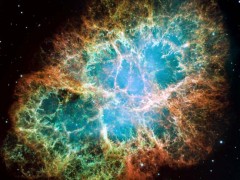 On April 12th, 2011, the Crab Nebula emitted a gamma ray flare lasting six days that was five times more intense than any of the others that were previously observed and 30 times brighter than the nebula’s normal gamma ray intensity. On April 16th an even brighter flare occurred but faded out over a period of two days. This new evidence, which perplexes astronomers, is easily explained if the Crab Nebula’s unusually strong synchrotron emission does not originate from its associated neutron star but from a volley of galactic cosmic rays striking it face on. For more on this visit our superwave forum at:
On April 12th, 2011, the Crab Nebula emitted a gamma ray flare lasting six days that was five times more intense than any of the others that were previously observed and 30 times brighter than the nebula’s normal gamma ray intensity. On April 16th an even brighter flare occurred but faded out over a period of two days. This new evidence, which perplexes astronomers, is easily explained if the Crab Nebula’s unusually strong synchrotron emission does not originate from its associated neutron star but from a volley of galactic cosmic rays striking it face on. For more on this visit our superwave forum at:
https://starburstfound.org/superwaveblog/.
May 4th radio interview about "Mr. X" and his water Fuel Secret
 An inventor referred to as "Mister X" appeared on the "Late Night in the Midlands" radio talk show on Wednesday May 4th, 2011 at 10 PM EST. Although pre show publicity claimed that he would reveal all the details about his water fuel technology, in fact he kept the details to himself. It was also claimed that he has survived ten murder attempts, but again he did not discuss this. He only made reference to the assassinations of Stan Meyer and John Kanzius. The inventor implied he was reticent because his technology was under review by investors and he mentioned that he had received threats if he were to advocate his hydrogen gas generation technology be used for increasing engine efficiencies by more than 25% - 30%.
An inventor referred to as "Mister X" appeared on the "Late Night in the Midlands" radio talk show on Wednesday May 4th, 2011 at 10 PM EST. Although pre show publicity claimed that he would reveal all the details about his water fuel technology, in fact he kept the details to himself. It was also claimed that he has survived ten murder attempts, but again he did not discuss this. He only made reference to the assassinations of Stan Meyer and John Kanzius. The inventor implied he was reticent because his technology was under review by investors and he mentioned that he had received threats if he were to advocate his hydrogen gas generation technology be used for increasing engine efficiencies by more than 25% - 30%.
Nevertheless the radio interview was interesting and some sites were suggested where one could visit to learn how to build overunity hydrogen generators. He directed people to the website panaceauniversity.org where he suggested clicking the link labeled hydroxy booster technology. Also he recommended listening to the you tube videos posted by zerofossilfuels. This individual has posted 267 consecutive videos. Mr. X recommended starting at video #12 and viewing as far as #133, and to pay particular attention to video #139. Video #12 is however difficult to locate and whether it is not certain that the videos necessarily link in consecutive order. The best would be to find a website that posts links to all 267 of them.
It should be commented that the open system paradigm that subquantum kinetics uses permits over-unity energy production in nature. That is, it allows First Law violations. For more information on this, see the following posting.
First ever observation of a newly formed quasar
On March 28, 2011 Swift telescope detected a new X-ray and gamma ray source which has been given the name GRB 110328A. The source was found to be located at the center of a galaxy in the constellation of Draco situated about 3.8 billion light years away (z = 0.35). Seeing that the source continued its highly energetic activity even days afterward, astronomers began to realize that what they had been observing was something other than a mere gamma ray burst (GRB). Most gamma ray bursts, however, last only from a minute or so to several hours at most. This source has at the time of this posting been active for almost 4 weeks! As a result, what we may be witnessing for the first time is the onset of a galaxy core into the active quasar state. For more information on this read our posting in the superwave forum (GRB 110328A: First ever observation of a newly formed quasar!).
Forword to the book Subquantum Kinetics
Subquantum Kinetics
Book Forword
by Fred G. LaViolette, December 2002
Midway through his undergraduate work in physics at Johns Hopkins, Paul became disenchanted with what he was being taught in class. He had expected that physics would lay the foundation for a grand plan of nature, that it would provide a fundamental framework which would accommodate all of the sciences, coordinating them into a coherent and intelligible whole. But to his dismay, he learned that physics was very insular and compartmentalized. Not only did it make no attempt to venture any kind of "big picture," its abstractions were often irrelevant to phenomena being studied in other fields. In his spare time, he attempted to intuit a more general, fundamental approach to science, one that could account for the formation and sustenance of systems at all levels of nature, living as well as non-living. He called this his theory of Existence.
Following his graduation, he turned to the study of business organization at the University of Chicago where he discovered that the theoretical approach he had been independently developing had already been elaborated in a relatively new discipline called general system theory. He also learned of breakthroughs that had been made in the fields of nonequilibrium thermodynamics and chemical kinetics which had profound implications in the life sciences for understanding the spontaneous genesis of ordered form. Pondering these ideas one night, he was struck with a flash of insight in which he saw an entirely new approach to physics, one that would allow it to be seamlessly encompassed within his general theory of existence.
I remember very clearly that night in the spring of 1973. It was 2 AM and the telephone beside my bed had begun ringing insistently. When I picked it up, I heard the frantic voice of my son. He was calling from his room at the University of Chicago and was saying, "Dad, this is something you have to know, in case something happens and I don't live until morning." I yelled back, "What's happened to you? What's the matter?" He said, "Oh, I'm fine, its just that I've made this great discovery and someone should know about it, just in case something should happen to me." His insight was that a physical subatomic particle might be conceived as an intricate concentration pattern which is continually sustained through the operation of some underlying subphysical reaction process. As I recall that night, at the time I did not greet his astounding news with any great enthusiasm.
During the times when Paul was home from graduate school for a visit, he would tell me about the new ideas he was coming up with in developing this theory. I was a good sounding board, being myself a physicist as well as an electrical and nuclear engineer. However, in the beginning I was rather skeptical. My usual response was, "Paul, don't you think you're trying to reinvent the wheel?" Then during one such visit, I proposed some "thought experiments," and to my surprise, his theories always held up. After that I began to take his concepts seriously. But it was only later, when he was working on his doctorate at Portland State University and had documented his ideas more clearly, that I began to see the far reaching scope of the subquantum kinetics methodology he was developing.
By 1979, Paul was ready to publish in a refereed journal. But, to his great disappointment, none of the physics journals would accept his papers. The reasons for rejection were varied and most always of a flimsy nature. However, it was clear that the message was always the same: "Sorry, your ideas don't conform to conventional physics." Finally, he decided that since his theory was founded on general systems theoretic concepts, it would be appropriate to submit his papers for publication in the International Journal of General Systems. The editor of that journal had them reviewed and decided that because of their importance, all three should be published in a single issue devoted exclusively to this work. It appeared in the November 1985 issue of IJGS [Vol. 11, No. 4] under the banner "Special Issue on Systems Thinking in Physics." These papers, along with other published papers and some additional material, were brought together in the form of a book which was published in 1994 under the title Subquantum Kinetics: The Alchemy of Creation. This second edition is an updated and enlarged version of that work.
No, this is not a simple remouthing of ideas from old textbooks. This is a bold adventure in scientific thinking. It resolves the difficulties and conflicts inherent in the theories of relativity and quantum mechanics. It provides a unified theory of fields and particles. It also gives us alternatives to the black hole assumption and to the notion of a Big Bang creation event, both of which have encountered serious problems in recent years. Furthermore it predicts the existence of a hitherto unknown source of energy powering the universe. But, be forewarned; to fully appreciate what is presented here, the reader must be willing to put aside many familiar concepts and "conclusions" taught by current physics until he has had a chance to acquire a clear understanding of this new framework.
Subquantum kinetics presents a major advance in our fundamental understanding of nature. It takes concepts developed in the relatively new field of systems theory and uses them to forge a new approach to physics, one that leads to a description of the universe that is faithfully consistent with real world observation and that also conforms to good commonsense.
In 2010, Paul dedicated his book Subquantum Kinetics in memory of his father,
Fred LaViolette (1916 - 2008)
Do neutrinos break the speed of light limit? Is physics in crisis?
.
On September 22nd scientists at CERN announced that they had clocked the speed of neutrinos over a 732 kilometer distance and found that surprisingly they travel at 0.0025% faster than the speed of light. So whereas light and electromagnetic waves of all frequencies are measured to travel about 300,000 kilometers per second, these neutrinos were found to travel at 300,006 kilometers per second, arriving at their destination about 60 nanoseconds sooner than expected.
See the following news sources:
https://www.physorg.com/news/2011-09-cern-faster-than-light-particle.html
https://www.reuters.com/article/2011/09/22/science-light-idUSL5E7KM4CW20110922
https://www.vancouversun.com/technology/Einstein+wrong+relatively+speaking/5453485/story.html
.
These results call in question the validity of the special theory of relativity which holds that nothing can travel faster than the speed of light. Since relativity is a mainstay in the standard physics paradigm, a pillar on which the framework of contemporary physics theory has been constructed, these results threaten its collapse and with it the construct of relativistic cosmology.
However, Carlo Contaldi questions the conclusions of the CERN-OPERA experiment in his preprint: https://xxx.lanl.gov/abs/1109.6160. He suggests that the researchers did not take into account various relativistic factors which could alter the timing of the GPS synchronized atomic clocks at each site and of the atomic clock that was moved from CERN to the Italian destination 732 km away to check their timing. He notes that effects such as the Sagnac effect due to the Earth's rotation, unaccounted for variations in gravity potential along the route taken by the calibration clock, relativistic effects to the calibration clock during acceleration and subsequent deceleration in the course of its transport, in total could have accounted for the 60 nanosecond time discrepancy that was observed. We will have to wait and see what response their paper receives.
Regardless of whether or not neutrinos really do break the speed of light barrier, past experiments have shown that high voltage electric field shocks, variously termed Coulomb waves, Tesla waves, or scalar waves, do break the speed of light barrier. These experiments support the subquantum kinetics physics methodology (SQK) which teaches that certain types of waves can travel faster than the speed of light. Namely, it predicts that such longitudinal waves should travel at superluminal speeds since the shock that forms the wave's leading edge propels the wave's ether substrate forward in the direction of travel. So now the wave velocity becomes v' = c + vether , where vether = the forward velocity of the wave's local ether matrix. In particular, Nikola Tesla in the early part of the twentieth century Tesla had measured superluminal speeds of c × π/2 (or 1.57 c for the longitudinal waves he radiated around the world from his magnifying transmitter monopolar antenna towers.
In the past some have theorized that neutrinos may be longitudinal waves similar to Tesla's waves. In particular, like Tesla waves, they can pass freely through matter with little attenuation. Nevertheless, there is one important difference. Unlike Tesla waves, neutrinos are particles with spin and mass, although their mass is extremely small. But this makes the challenge for Einstein's theory even more upsetting. For, according to Einstein's theory and laboratory observation, as a particle approaches increasingly close to the speed of light, its mass increases exponentially, an effect termed relativistic mass dilation. Also in accordance with the law E = mc2, a particle's energy should also increase exponentially. Consequently, according to this formula not only should each neutrino have attained infinite mass and energy long ago in its acceleration history, but at superluminal velocities it should no longer exist in the physical world.
There are two ways out of this mess. Either the CERN-OPERA experiment reached the wrong conclusion because factors affecting the timing of its atomic clocks were not taken account of, or if the conclusions are found to be correct, the neutrinos could have attained their superluminal speeds by surfing on an ether wind produced by the CERN accelerator beam. This is further discussed below, but first let us review the history of superluminal measurements. As mentioned above, this is not the first time that the c speed barrier has been broken. There have been many demonstrations of energy waves traveling faster than the speed of light, although superluminal energy wave propagation is not nearly as shocking and destructive to physics as is superluminal particle propagation. Below is a list of researchers who have shown definite evidence of superluminal wave propagation, but whose work unfortunately has received little or no media coverage.
.
A Brief History of Superluminal Wave Experiments
1) In 1988 researcher Alexi Guy Obolensky, working together with Prof. Panos Pappas, transmitted electric pulse shock waves at superluminal speed. They published the results of their experiment in Electricity and Wireless World,December 1988, pp. 1162 - 1165.
page 1162, page 1163, page 1164, page 1165
The above page links are provided on Dr. Pappas' website. Some of the images are marked with corrections that Dr. Pappas has made to correct mistakes made in the original published manuscript which was mistakenly not sent to A. G. Obolensky for his final review.
2) Also in 1988, Eric Dollard demonstrated an experiment in which he sent longitudinal waves through a coaxial cable at 1.26 c. He discusses this in the following video: https://video.google.com/videoplay?docid=-721789270445596549#. See especially the part 14 minutes into the video.
3) In 2005 - 2006 Alexi Guy Obolensky and myself transmitted high voltage Coulomb shock wave pulses across his laboratory at a speed averaging 1.26 c. At 3.07 meters distance the pulse arrived 1.7 nanoseconds faster than luminal speed. Our threshold resolution for distinguishing time delays was 125 picoseconds. The rise time of our shock front was about 0.8 nanoseconds. The speed declined inversely with increasing distance from the emitting electrode in accordance with the predictions of subquantum kinetics. At a distance of 83 cm from the electrode the speed was clocked as high as 2.1 c with speeds as high as 8 c being projected at 65 cm distance! Graphs of the data are published in my book Secrets of Antigravity Propulsion, p. 177 -185. Other than this reporting, Obolensky and myself have not yet taken the time to write up the results for publication in a technical journal due to current demands on our time. Nevertheless, as described in Verification Number 11, our experiment confirmed a key a priori prediction of subquantum kinetics.
4) Also around this time, Eugene Podkletnov and Modanese performed experiments with the Podkletnov gravity impulse beam generator in which they succeeded in sending gravity shock impulses over a distance of 1211 meters at a speed of 64 c. They report their findings in a paper entitled "Study of Light Interaction with Gravity Impulses and Measurements of the Speed of Gravity Impulses" which is appearing this year (2011) in an edited book of papers. E. Podkletnov has disclosed to me in personal communication that they have succeeded in measuring speeds of several thousand c in a higher power impulse beam generator.
5) Dr. Panos Pappas has recently continued experiments on superluminal pulse propagation in his own laboratory in Athens, Greece. He reports the results of his work on his papimi.gr website.
In addition to the above there are various reports of superluminal signal propagation over very short distances such as the papers by Ishii and Giakos (1991) and Enders and Nimtz (1993).
.
Surfing the Beam
In subquantum kinetics, a superluminal wave gets its superluminal speed because it rides on an ether wind; recall v' = c + vether . So, the same may apply to neutrino particle propagation. In the process of producing its neutrino beam, the CERN accelerator may also be producing a columnated ether wind traveling in the same direction as the neutrinos and, as a result, the neutrino velocity might become boosted by the added ether velocity, vether. This calls to mind the columnated ether wind beam produced by Eugene Podkletnov's beam generator.
A Celestial Explosion Warning Signal?
The question that arises is whether natural neutrino outbursts produced by stellar explosions and galactic core explosions would similarly have superluminal velocities. Or would their velocities fall off as 1/r due to the natural outward dissipation of the ether wind. If neutrinos do preserve an undiminished superluminal velocity even in natural explosions, this could be a valuable warning for the arrival of a harmful gamma ray burst or galactic superwave. For example, if a neutrino burst were to arrive from the Galactic center approximately 23,000 light years away and were to have a velocity 0.0025% higher than c, as in the CERN experiment, then it would be arriving 7 months ahead of the initial gamma ray pulse and could give us some time to prepare.

